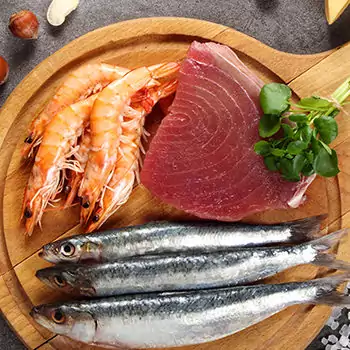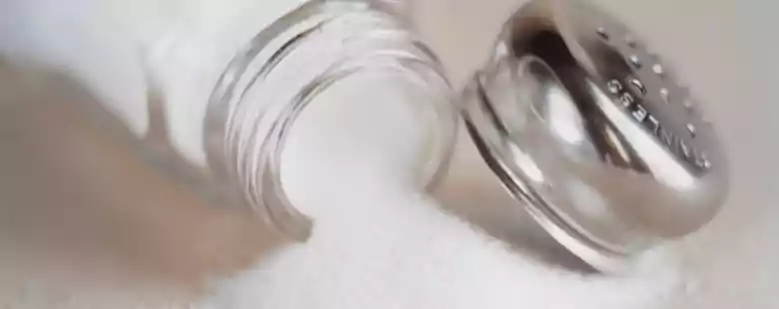
Living Well
Iodine Supplements – Lost Key to Great Health?
Oct 28, 2016Why Iodine?
Iodine is a trace element that we need in only small quantities every day. But if we don’t get it even if in the form of iodine supplements, the health consequences can be quite severe, even bordering on fatal. That’s why governments across the world have initiated nation-wide programmes to add iodine to something that we call eat everyday – table salt.
The World Health Organisation says “WHO recommends that all food-grade salt, used in household and food processing should be fortified with iodine as a safe and effective strategy to prevent and control iodine deficiency disorders”
In the U.S., we adopted this in 1924.
And that’s precisely why most of us, including our doctors, believe that we should no longer suffer from iodine deficiency things it can lead to – including serious thyroid issues, breast lumps, and even cancer. Sadly, research shows that iodine deficiency is still widespread in both developed and developing parts of the world.
Even just 8 years ago, a study estimated that one in three people in the world are affected by iodine deficiency. An estimated 31.5% of school-age children (266 million) have insufficient iodine intake. In the general population, 2 billion people have insufficient iodine intake. 32 countries still officially recognize iodine deficiency as a public health problem.
Why Is Iodine Crucial to Human Health?
Iodine is a trace element that is critical for the proper production and utilization of thyroid hormones – thyroxine (T4) and triiodothyronine (T3). Even single cell of the human body uses T3 to produce energy it needs. T3 has three iodine molecules as its main component (that’s why it is called ‘tri-iodo-thyronine’). For this reason, a deficiency or even insufficiency of iodine can affect thyroid hormone synthesis and as a result, adversely impact the health of every system of the human body.
Symptoms of iodine deficiency can be several:
Goiter, a condition in which the thyroid gland gets enlarged when it doesn’t have enough iodine to make hormones. The feedback systems of the body cause the thyroid to work harder to make up for the reduced hormone production, causing the goiter, which is seen physically as a swollen neck.
One of the other symptoms of iodine deficiency is that women may stop ovulating, leading to infertility.
Iodine deficiency has been linked to autoimmune disease of the thyroid called Hashimoto’s thyroiditis and increases the risk of getting thyroid cancer. The list of symptoms that may be caused in this condition is extremely long. Some experts think that iodine deficiency may also increase the risk of other cancers such as cancer of the prostate, ovaries or uterus.
Iodine deficiency is also hugely implicated in breast cancer. A study conducted in the year 2000 showed that there was an association between thyroid autoimmunity and breast carcinoma.
Iodine-deficient breast tissues are also found to be more susceptible to fibrocystic breast disease. In research studies, patients with this condition, when treated with molecular iodine, showed improvement in breast disease.
Iodine deficiency during pregnancy can lead to high blood pressure for the mother and cause mental retardation for the baby. Pregnant women need 50% more iodine as they have to provide enough iodine for their babies’ growth. In a 2004 study of 100 pregnant mothers in Boston, Pearce et al. report that 49% of pregnant women were taking iodine below the RDA and 9% had UI classifiable as iodine-deficient. In fact, across the globe iodine deficiency is thought to be the most common preventable cause of mental retardation.
How Much Iodine Do We Really Get From Food?
Recent surveys in the U.S. have indicated that there is an increase in the people with low urinary iodine levels, suggesting that we are not getting enough iodine. The National Center for Health Statistics (NHANES) survey shows that urinary iodine levels in the 1971-74 was 32 mg/dL and 1988-91 was 14.5 mg/dL and 16.1 mg/dL in 2000.
Iodine Deficiency: Why Does It Happen?
Fear Of Hypertension Limits Salt Intake
Less than half of U.S. households were found to use salt because of the fear of consuming too much sodium, since in popular media, this is often linked to hypertension. In the DASH study (Dietary Approaches to Stop Hypertension) conducted in 1997, it was found that as long as the diet was rich in fruits, vegetables, and low-fat dairy products, it resulted in lowered hypertension, despite having up to 3grams of sodium per day.
Increase In Eating Out
The Salt Institute estimates that only about 70% of the table salt sold is iodized. When you eat out, you don’t know the kind of salt you’re getting. What’s more, thanks to the processed foods we eat outside, the average American iodine intake has declined from 250 μg/day to 157 μg/day. Because, the consumption of processed foods which do not use iodized salt, you can see how there might be an iodine deficiency. The idea that salt is bad for you and contributes to heart disease has become a standard thought. It is no small wonder then that so many of us suffer from an iodine deficiency.
Most Foods Fortified With Iodine Are Unable to Retain Iodine
Iodine is highly susceptible to evaporation. Iodine is added to table salt at an average of 60 mg/kg. A kilo of salt may last around 180 days in a home. During this time, if table salt is sitting out, it loses about half of it’s iodine content. So the average iodine available from salt works out to around 0.5-1mg per day per day or less, which is lesser than the recommended RDA of iodine for any group.
Too Much Fluoride Can Displace Iodine
A study conducted in 2014 showed that high fluoride exposure cause abnormities in thyroid. Because fluoride and iodine both belong to the family of chemicals called halogens, they have the same receptors in the human body. Having too much fluoride enter our body is a sure way of displacing iodine from the body. We get too much fluoride these days from our toothpastes and our water.
Removal Of Iodine From Commercial Breads
Thanks to a scare that the American population was receiving too much iodine, the government decided to disallow the use of iodine as a dough conditioner in 1980. So today, we don’t get the iodine we used to get from our daily bread before 1980. To make matters worse, industry chose bromide as the replacement. Bromide is a toxic halide that competes with iodine and blocks iodine receptors and inhibits the absorption of iodine from other foods as well.
Foods Rich In Iodine
Iodized salt is not the only form of getting essential iodine into our body. Many natural foods can also help.
- Fish such as cod and tuna, seaweed, shrimp, and other seafood are generally rich in iodine. A 6-ounce portion of ocean fish provides 650 micrograms of iodine.
- Dairy products such as milk, yogurt, and cheese contain iodine.
- Fruits and vegetables also other foods rich in iodine, although the amount of iodine may vary depending on how iodine-rich the soil is and the kind of fertilizers used.
- Kelp is a rich source of iodine. Other seaweed like nori, kombu, and wakame are also good sources of iodine and form a standard part of the Japanese diet.
Iodine: Should You Supplement?
Everyone agrees that if you are getting enough iodine in your food, you don’t need iodine supplements. However, for the reasons stated earlier, many of us many be deficient in iodines. One simple way to be sure is to test.
In general, we excrete more than 90% of our dietary iodine, so one simple way to determine if you’re getting enough is to see how much you’re peeing out. Spot urine measurements are a useful indicator but 24-hour urinary iodine or multiple spot urine measurements are more accurate. You can ask your healthcare provider about taking a urine iodine challenge test.
While some people think it is okay to use a home test to determine iodine deficiency, by painting iodine solution on your skin and examining if most of it evaporates or gets absorbed, the skin-iodine test alone is not a reliable way to determine if you should supplement.
Dietary Iodine Supplements
Many multivitamins contain iodine in the form of potassium iodide or sodium iodide. Supplements that contain the kelp seaweed for iodine are also available.
Iodine supplements in dosage amounts of (200 mcg) are given free of cost to all expecting and new mothers in Spain. The American Thyroid Association and the Endocrine Society advocate women in the U.S take a dietary iodine supplement containing 150 µg iodine/day beginning preconception.
Doctors who are known for their expertise in iodine and use it extensively use a few key parameters to choose right iodine supplements.
- The supplement must have both iodine and iodide. Different parts of the body need different forms of the element. While the breast tissues use iodine for their health, the thyroid gland uses iodide. The human body is thought to be able to convert these forms from one to the other, this is not always as efficient as simply getting both directly from food/supplements.
- If you are the kind of person who believes in DIY testing and supplementation, you will do well to not exceed mcg level doses per day. A typical iodine dose to support good health may be between 200-300 mcg per day. This is because excess iodine, especially in patients with hyperthyroid conditions can cause serious consequences like palpitations and anxiety.
- If you are going to work with a doctor, to use iodine to address a serious health issue, supplements that deliver the dose in milligrams or mg is better than one that delivers it in micrograms or mcg. While the RDA for iodine ranges from 150-290 mcg per day for adults, many doctors believe that this is inadequate. For example, Dr. David Brownstein, the noted MD who is known as the Iodine Doctor, recommends a minimum dose of 1.5mg per day to support proper thyroid function and higher doses when there is a clear hypothyroid on account of iodine deficiency.
Stephanie Buist, ND recommends the following iodine supplements as being preferred forms:
Lugol’s Solution Iodine contains 6.3 mg of molecular iodine/iodide per drop. Many people mistakenly think that the Lugol’s stands for a particular brand or company. It is actually named after the French physician who discovered a kind of solution in which the iodine could be delivered into the body. The solution has one-third molecular iodine (5%) and two-thirds potassium iodide (10%).
- Iodoral contains Iodine and Potassium Iodide. This is Lugol’s formula in a pill which contains more iodine than the RDA.
- Good brands like VitaminLife, Biotics Research, etc. that have 12.5mg of iodine/iodide
Can One Have too Much Iodine?
Yes, it is always better to test before supplementing with iodine. People with Hashimoto’s variant of thyroid disease should supplement iodine with care; it may cause aggravation of symptoms during the hyperthyroid phase. Patients should always involve their medical practitioner in their supplementation regime. If you take too much iodine in one go, you could encounter burning of mouth, throat, and stomach. It could also cause diarrhea, vomiting or a weak pulse.
So go ahead and get an iodine urine test – especially if you’re facing any of the problems that come from not having enough iodine. Before start supplementation, keep your medical practitioner involved in the process. Remember: iodine could be the small but vital piece that helps you solve your unexplained symptoms and restores you back to vibrant health.
References:
- de Benoist B1,McLean E, Andersson M, Rogers L. Iodine deficiency in 2007: global progress since 2003, Food Nutr Bull, 2008.
https://www.ncbi.nlm.nih.gov/pubmed/18947032 - Zimmermann MB, Andersson M. Update on iodine status worldwide. Curr Opin Endocrinol Diabetes Obes. 2012.
- DASH Collaborative Research Group, N Engl J Med 1997, A clinical trial of the effects of dietary patterns on blood pressure.
https://www.nejm.org/doi/full/10.1056/NEJM199704173361601#t=articleBackground - Kilbane MT1,Ajjan RA, Weetman AP, Dwyer R, McDermott EW, O’Higgins NJ, Smyth PP. Tissue iodine content and serum-mediated 125I uptake-blocking activity in breast cancer. J Clin Endocrinol Metab. 2000.
- Eskin BA. Iodine and mammary cancer. Adv Exp Med Biol. 1977.
- Ghent WR, Eskin BA, Low BA, Hill LP. Iodine replacement in fibrocystic disease of the breast. Can J Surg. 1993.
- Iodine level, United States, 2000. NCHS. Health E-Stats.
- Thyroid Cancer Canada, Vol 8, Iss 2. 2010. Q&A with Dr. Sandy Dasgupta.
https://www.thyroidcancercanada.org/userfiles/files/Summer_2010_Issue_27_colour.pdf - Angela M.Leung, Lewis E.Braverman, Elizabeth N.Pearce. History of U.S Iodine Fortification and Supplementation. 2012. Nutrients.
https://www.ncbi.nlm.nih.gov/pmc/articles/PMC3509517/ - Navneet Singh, Kanika Gupta Verma, Pradhuman Verma, Gangandeep Kaur Sidhu, Suresh Sachdeva. Comparitive study of fluoride ingestion levels…2014. Springerplus.
- The Guide to supplementing with iodine. Stephanie Buist, ND HC.
https://jeffreydachmd.com/wp-content/uploads/2014/03/The-Guide-to-Supplementing-with-Iodine-Stephanie-Burst-ND.pdf - Institute of Medicine (US) Panel on Micronutrients. Washington (DC) National Academies Press. Iodine (US); 2001.
- https://www.ncbi.nlm.nih.gov/books/NBK222323/
- Iodine, MedlinePlus, U.S. National Library of Medicine. https://medlineplus.gov/druginfo/natural/35.html
- Iodine in diet, MedlinePlus U.S. National Library of Medicine.
https://medlineplus.gov/ency/article/002421.htm
- Dasgupta, Purnendu; Liu, Yining; Dyke, Jason. Iodine Nutrition: Iodine Content of Iodized Salt in the United States. 2008.
- https://pubs.acs.org/doi/full/10.1021/es0719071
- Iodized Salt. The Salt Institute. 2013.
https://www.saltinstitute.org/news-articles/iodized-salt/
- Iodization of salt for the prevention and control of iodine deficiency disorders. WHO
https://www.who.int/elena/titles/guidance_summaries/salt_iodization/en/
- Lack of access to iodized salt around the world. Worldatlas.
https://www.worldatlas.com/articles/lack-of-access-to-iodized-salt-around-the-world.html
- Brownstein D. Iodine, Why You Need It. Medical Alternatives Press (4th edition) 2009






